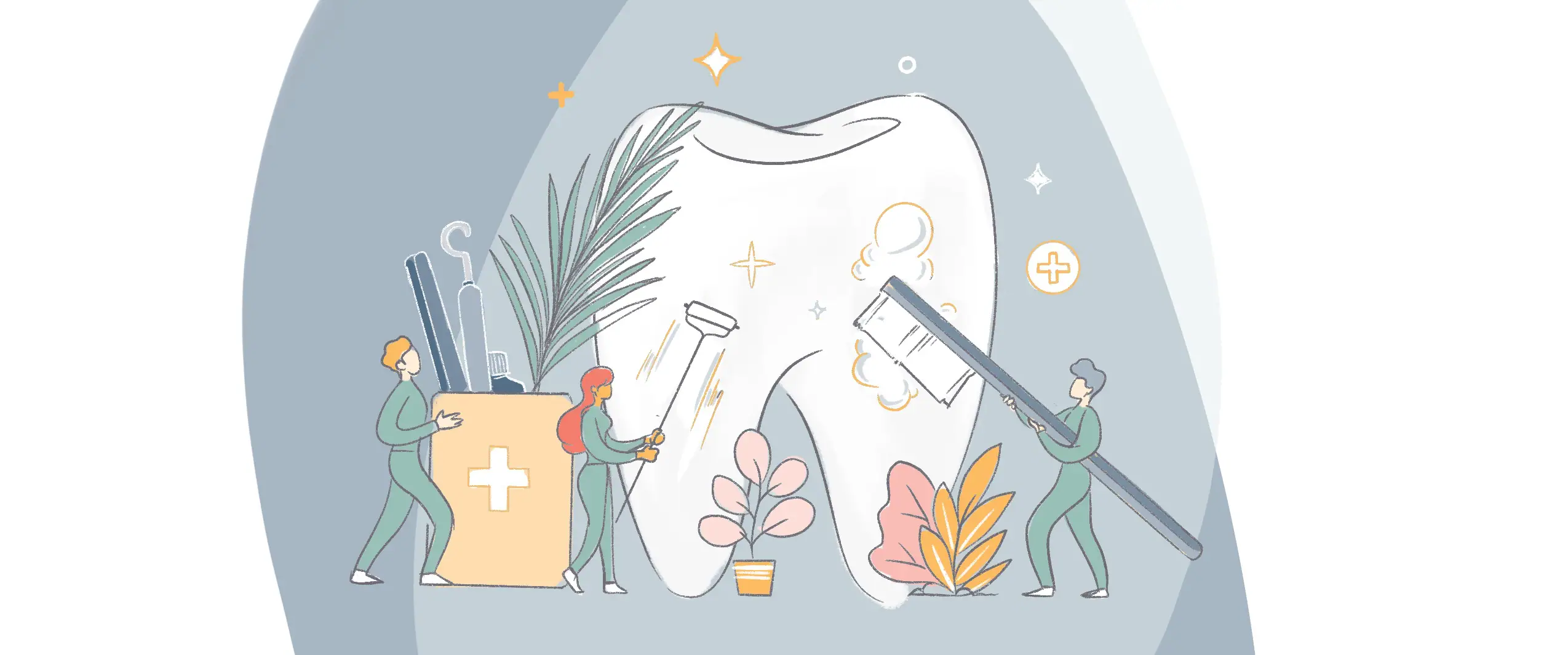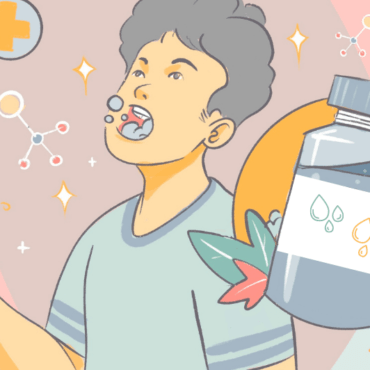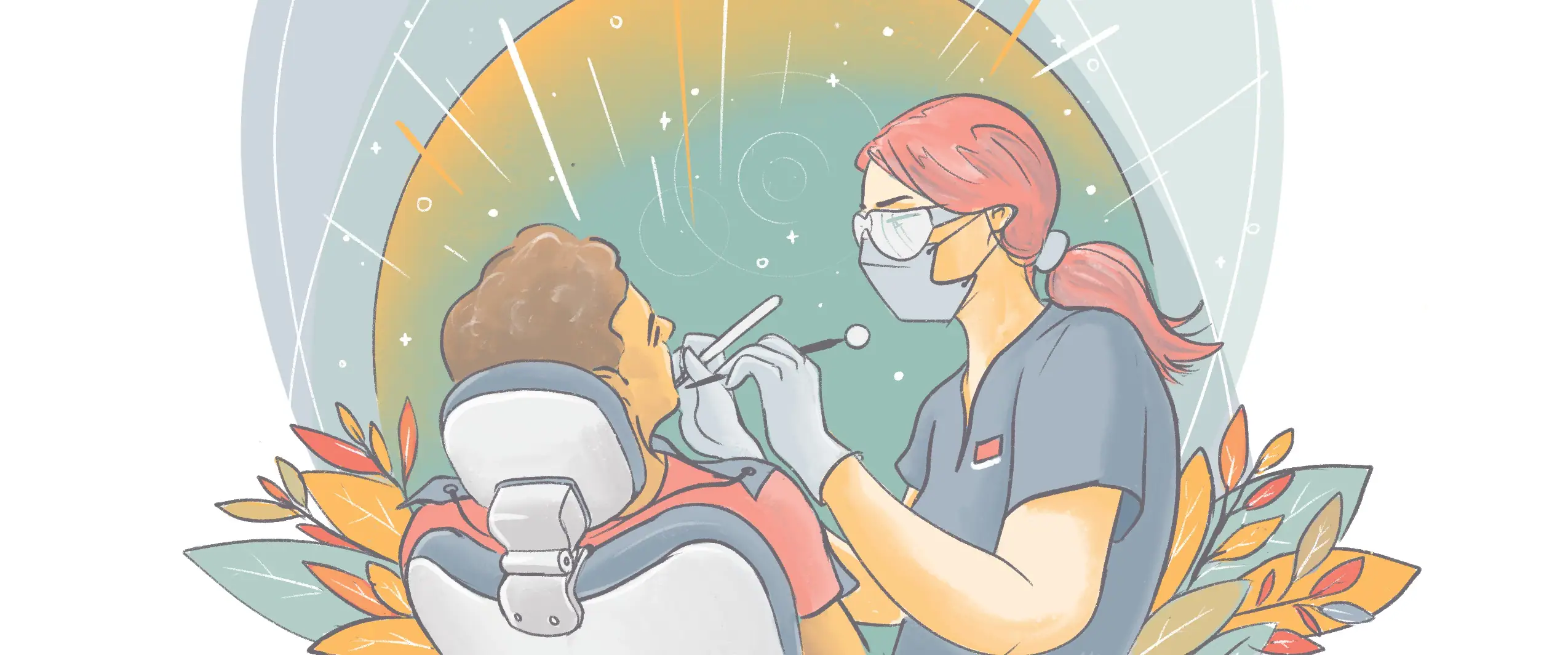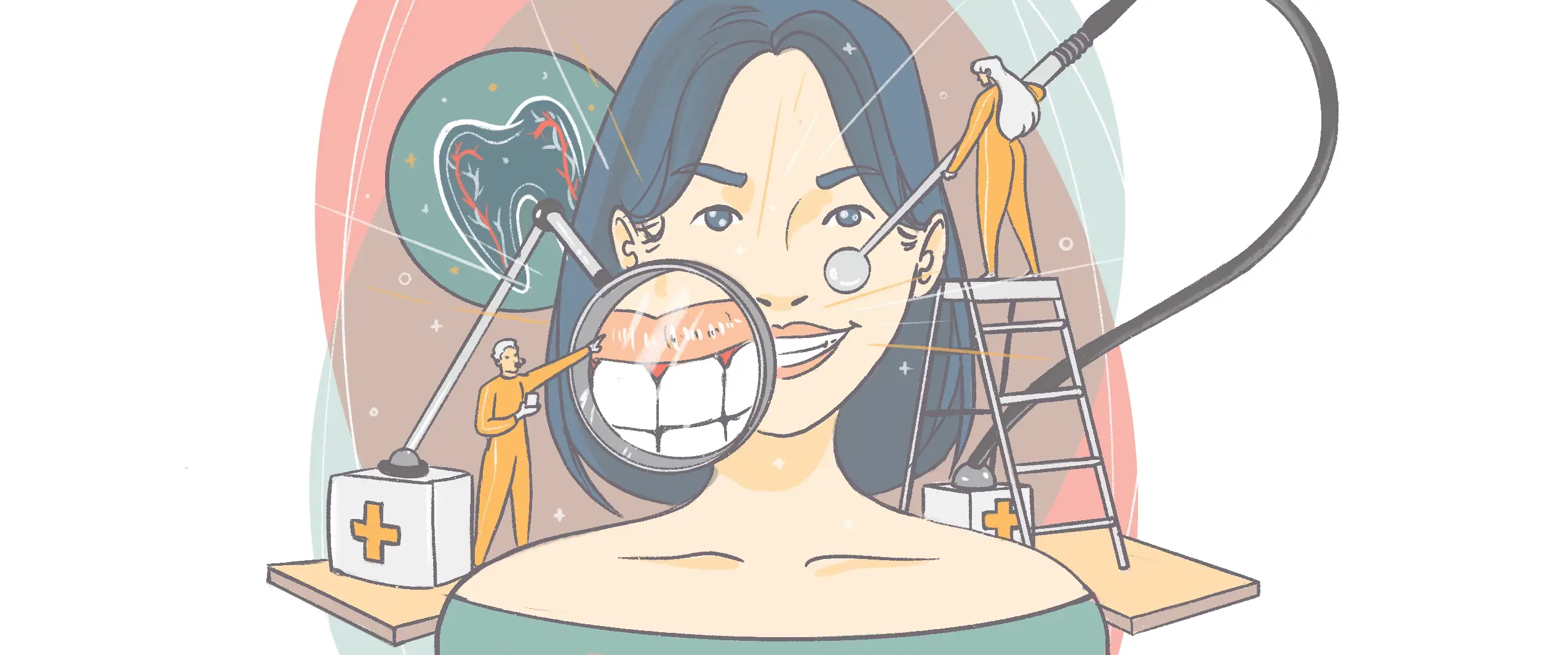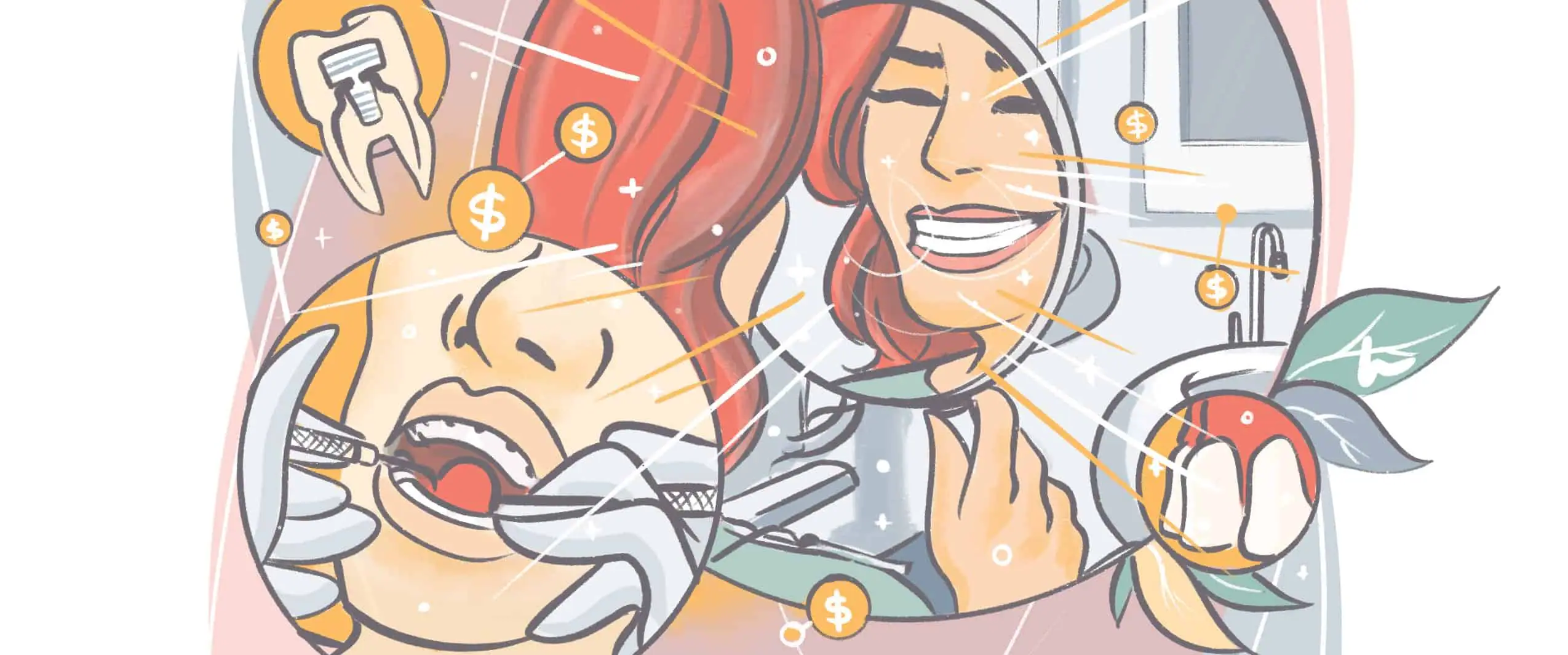Nearly everyone will be tempted to try natural teeth whitening eventually. Whether it’s to counter the look of yellowing that has developed over time or in preparation for a big event, teeth whitening can help. Maybe it’s due to poor brushing habits or not using an electric toothbrush, which can clean 100 percent better than a manual brush. Or it could be just bad luck.
These things happen but you’re not powerless against yellow teeth. Here’s a comprehensive guide on why teeth turn yellow, natural ways to whiten teeth, and how to prevent tooth staining.
Common Reasons Teeth Turn Yellow
Worried about yellow teeth? We have good news. Oftentimes there’s a clear cause.
Generally, for teeth to go yellow it’s because of some bad habits connected to lifestyle. Drinking coffee or tea and smoking or chewing tobacco are all common culprits. On the other hand, certain diseases, medications or even genetics can sometimes play a role in tooth discoloration.
Why is there good news? If the cause is related to lifestyle habits, that means you can also prevent your teeth from losing their white sparkle. More on that in a bit, in the meantime, here are some other factors that cause teeth to yellow.
Due for a checkup?
Find a top rated dentist near you that takes your insurance.
Enamel Thinning
Tooth enamel is precious. It also makes for a white smile, since enamel is white, with the under-layer, known as dentin, yellow-brown. Unfortunately, enamel is also easy to damage, with the many ways it can happen including excessive soft drink consumption, acid reflux disease, and certain medications.
Stains
In 2016, a professor at Tufts University’s School of Dental Medicine studied the outside factors that cause stains. Typically food, beverages, or other substances (like cigarettes) can create extrinsic stains while intrinsic stains are found deeper inside teeth.
This study noted how foods most likely to stain teeth include berries, popsicles, candies, pickles, soy sauce, curries, and tomato sauce. Don’t throw out your strawberries or spicy curry yet! You don’t have to avoid these foods, but knowing some of the big stain-causing contenders will help flag when you need to step up your dental care game — in the form of a thorough brushing — after eating.
But food isn’t the only culprit for teeth staining, according to A recent medical article medications like antibiotics can also cause stains.
Grinding
Are you grinding those pearly whites? That habit can wreak havoc on your teeth and eventually lead to stains. Mouth guards are a common solution for prevention and if left unchecked, grinding can cause enamel loss, fractured teeth, gum recession, and premature aging and yellow due to shrinking dentin. If you’re hoping to show off a bright, white smile but are grinding your teeth you’ll need to quickly address.
Age
To some extent, tooth yellowing can be unavoidable. Dentists state that as teeth age, dentin yellows naturally, causing teeth to change tone over time. If you wear down your enamel this is especially true, so protecting your tooth’s barrier today will help keep them white in the future.
Intrinsic Factors
Like aging, intrinsic factors are mostly out of your control. But how can you tell if intrinsic factors are causing those yellow hues? Intrinsic stains develop deep inside the tooth and are sometimes caused by unhealthy habits, but they can also happen because of trauma to the tooth, medication administered to young children, and even from in utero factors.
A Chicago-based dentist made note of an unsurprising fact: Intrinsic stains are far more difficult to fix than extrinsic stains. But treatments are available including options like installing veneers.
Easy Ways to Naturally Whiten Teeth at Home
Anyone looking to avoid harsh chemicals while teeth whitening, this is the place for you. Did you know using harsh chemicals is generally frowned upon? You could risk damaging your enamel making these treatments often more trouble than they’re worth. Why risk it? When there are numerous methods for natural teeth whitening at home.
The following tips aren’t for instant teeth whitening and some of the methods illustrated here take time. But with persistence, they can yield results. And we bet you have a lot of the items needed in your home right now.
Oil Pulling
The name of this might sound noxious but bare with us. The way this method works is to apply coconut oil to your teeth after brushing and swish the melted oil for anywhere from five to 20 minutes. This is not a misprint, we said minutes.
But oil pulling, unorthodox as it might sound, can get results. In addition, a study available through the National Center for Biotechnology Information noted, “Oil pulling can be explored as a safe and effective alternative to Chlorhexidine.” While time-consuming, this method has converted many looking for whiter teeth. Side note: Do not try spitting the used oil in the sink, aim for the garbage can. Your plumbing will thank you.
Put Baking Soda on your Toothbrush
This doesn’t mean you have to switch your current toothpaste for one that includes baking soda (but these are widely available and have great reviews.) Health information publisher HealthLine explains how to whiten teeth with baking soda. Start by mixing one tablespoon of baking soda with two tablespoons of water then brush with the mixture a few times a week.
“Brushing with a paste made with baking soda and water can reduce bacteria in your mouth and buff away surface stains,” HealthLine concluded.
Use Hydrogen Peroxide (in the Appropriate Amount)
An article in Medical News Today noted that hydrogen peroxide can be effective in fighting yellow stains. But before you grab the bottle under your bathroom sink, just remember that overuse of peroxide can cause enamel damage and if you have sensitive teeth you’ll probably want to steer clear of this method. Most store-bought whitening treatments use hydrogen peroxide with a strength of 10 percent but you’ll want to use 3 percent (commonly found in stores) to avoid hurting your enamel.
This article lists two methods of using peroxide including diluting it with water and swishing it around your mouth, or creating a paste out of peroxide and baking soda and applying it directly to your teeth.
Eat your Fruits and Veggies
An apple a day keeps the doctor away but it also might help with teeth whitening. A 2011 article from the American Association of Retired Persons’ noted that consuming apples can help prevent yellow stains.
The article listed other foods that can help keep teeth white, namely:
- Carrots
- Celery
- Cheese
- Oranges (up for debate elsewhere)
- Milk
- Pineapples
- Strawberries (when mashed up, rubbed on teeth, and left for five minutes)
- Yogurt
Most of these foods are believed to help whiten teeth because they increase the mouth’s production of saliva which helps wash away plaque and harmful bacteria.
Try Turmeric
This is a big one in the beauty influencer world. A few years ago a beauty blogger documented her experience while using natural teeth whitening agents including the vivid, yellow spice turmeric. Using her method, mix turmeric, coconut oil, and baking soda into a paste then apply to your teeth and let it sit for two minutes. After a week, she noticed a subtle difference in the brightness in her teeth, though there was a downside:
“I found myself cleaning (or, more accurately, scrubbing) my sink daily,” she wrote. “Turmeric is bright yellow and stains everything in sight.”
Is staining your shirts and sink worth the subtle difference? We’ll leave that up to you!
How to Prevent Stains
Prevention can be the best cure for yellow teeth. There are numerous prevention strategies including the simplest method: brushing after every meal. If you’re looking to step up your game, try rinsing with a disclosing solution from your dentist to discover your plaque quotient. This will show spots where teeth are likely to stain if brushing techniques doesn’t improve.
Brushing and Flossing
Brushing twice and flossing once daily can help keep teeth white as well as prevent other dangerous oral health issues. According to the ADA “brushing twice daily and flossing once a day are two critical behaviors to help prevent the risk of all oral infections.” As HealthLine notes, brushing and flossing regularly will help prevent harmful plaque from building up and causing yellowing.
What about Whitening Toothpaste, Strips, or Trays?
Whitening toothpaste and strips can be purchased at your neighborhood drugstore and are a common solution. Reviews of these products suggest effective results. Though some dentists caution against using either. Why? The author of this article, Mark Burhenne, DDS, warns that strips specifically can damage your teeth and gums if used improperly. That whitening toothpaste? That’s a gimmick Burhenne states, as toothpaste can’t whiten teeth, toothpaste only cleans.
“However, if you do want professional results,” he adds, “the safest and most effective way to whiten teeth, in my opinion, is through custom-built teeth whitening trays from your dentist.” He lists other natural options that are safe and effective including activated charcoal as well as the use of stain-removing electric toothbrushes.
Avoid Anything Acid-Based
Some people recommend using lemon juice to whiten teeth but don’t try it! One dentist told Men’s Health he would never recommend this approach: “It’s very acidic and if not cleaned off properly it can pool on the tooth and erode the enamel, and that’s the last thing you want.” Healthy enamel is one of your best defenses against yellowing so we suggest you take this warning seriously.
Don’t Put Salt on your Teeth
Who rubs sea salt on their teeth? Apparently, enough people that a health website had to caution people against it. We know you’d never try this (right?) but here’s why it’s not worth the risk: Rubbing sea salt (or other abrasive substances) onto your teeth can cause microscopic scratches and abrasions, leading to the buildup of bacteria and decay. See? You’re too smart for this dangerous hack.
Due for a checkup?
Find a top rated dentist near you that takes your insurance.
A Few Ways to Prevent Teeth Stains
Teeth whitening is like losing weight. Just as pounds can return after weight loss, if lifestyle changes aren’t maintained teeth can start to yellow once again. After you’ve whitened your teeth, here are a few methods that are helpful for preventing teeth from staining again.
Make Dietary Changes
It’s rough, but some tasty foods are not going to help you on your quest for whiter teeth. Including your morning jolt and that delicious bolognese. Business Insider noted eight common offenders namely:
- Acidic or citrusy foods
- Coffee
- Curry and tomato sauce
- Sports and energy drinks
- Soda
- Sugary foods and sweets
- Tea
- Wine
Depending on how healthy and white your teeth are at the moment, it might be wise to eliminate, or at least cut down on some of these foods and beverages. Or as we talked about before, if you can’t avoid these foods, brush right after you’re finished.
Maintain Excellent Oral Hygiene
Aside from brushing and flossing daily, WebMD states that maintaining oral hygiene can include using antiseptic mouthwash and using whitening toothpaste (though only once or twice per week.) Fluoride, an included ingredient in many kinds of toothpaste, can also be helpful according to Medical News Today. Some municipalities also fluoridate their water supplies which can be controversial within some communities but is still a practice in some places throughout the U.S.
Drink and Swish Water
Key to hydration and a strong, bright smile. According to the ADA, water is the best beverage for healthy teeth. A 2016 study found that a Canadian city had higher rates of tooth decay after the municipality stopped adding fluoride to the water five years prior, than another city with uninterrupted fluoridation.
At a basic level, water can help you produce saliva which washes away bacteria and plaque to help keep your mouth clean. As a 2009 study in the British Dental Journal recommends, swishing with water after meals or consuming soda “for two to five minutes can be of help in removal of loosened food particles, dead cells and mucus from the oral cavity.” So get swishing as a natural teeth whitening remedy.
Get to the Dentist
Natural teeth whitening isn’t always the healthiest way to maintain your smile.Many people don’t look forward to going to the dentist, with some surveys quoting up to 62 percent of adults fear sitting in the chair. But cleanings every 3-6 months help prevent buildup of plaque and keep teeth looking their whitest. There’s a reason all those toothpaste ads talk about a “fresh from the dentist” feeling, but really, only the dentist can grant that bright shine.
Due for a checkup?
Find a top rated dentist near you that takes your insurance.


